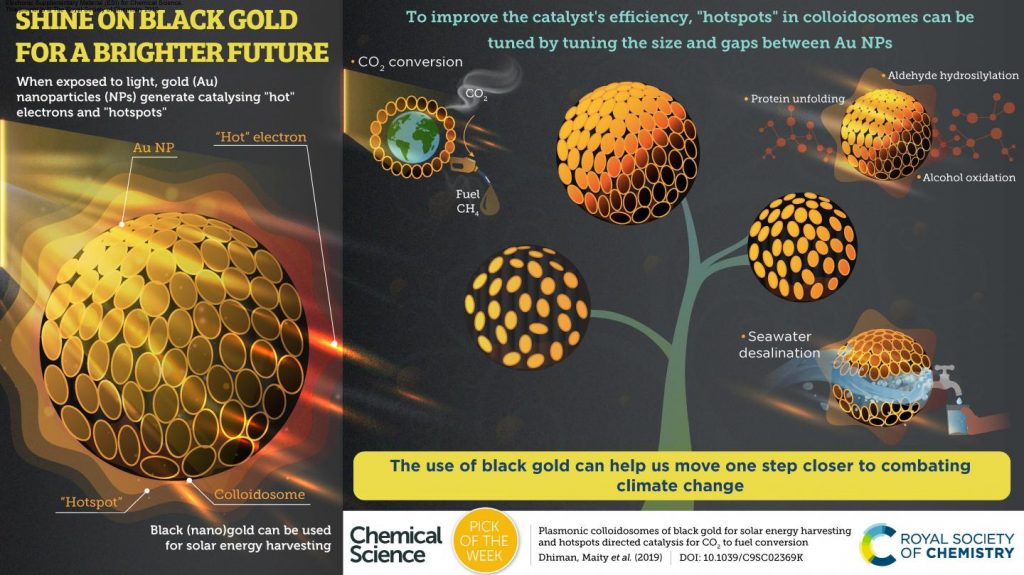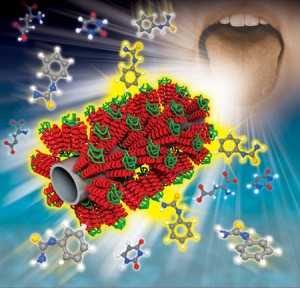After seeing the description for Laura U. Marks’s recent work ‘Streaming Carbon Footprint’ (in my October 13, 2023 posting about upcoming ArtSci Salon events in Toronto), where she focuses on the environmental impact of streaming media and digital art, I was reminded of some September 2023 news.
A September 9, 2023 news item (an Associated Press article by Matt O’Brien and Hannah Fingerhut) on phys.org and also published September 12, 2023 on the Iowa Public Radio website, describe an unexpected cost for building ChatGPT and other AI agents, Note: Links have been removed,
The cost of building an artificial intelligence product like ChatGPT can be hard to measure.
But one thing Microsoft-backed OpenAI needed for its technology was plenty of water [emphases mine], pulled from the watershed of the Raccoon and Des Moines rivers in central Iowa to cool a powerful supercomputer as it helped teach its AI systems how to mimic human writing.
As they race to capitalize on a craze for generative AI, leading tech developers including Microsoft, OpenAI and Google have acknowledged that growing demand for their AI tools carries hefty costs, from expensive semiconductors to an increase in water consumption.
But they’re often secretive about the specifics. Few people in Iowa knew about its status as a birthplace of OpenAI’s most advanced large language model, GPT-4, before a top Microsoft executive said in a speech it “was literally made next to cornfields west of Des Moines.”
…
In its latest environmental report, Microsoft disclosed that its global water consumption spiked 34% from 2021 to 2022 (to nearly 1.7 billion gallons , or more than 2,500 Olympic-sized swimming pools), a sharp increase compared to previous years that outside researchers tie to its AI research. [emphases mine]
“It’s fair to say the majority of the growth is due to AI,” including “its heavy investment in generative AI and partnership with OpenAI,” said Shaolei Ren, [emphasis mine] a researcher at the University of California, Riverside who has been trying to calculate the environmental impact of generative AI products such as ChatGPT.
…
If you have the time, do read the O’Brien and Fingerhut article in it entirety. (Later in this post, I have a citation for and a link to a paper by Ren.)
Jason Clayworth’s September 18, 2023 article for AXIOS describes the issue from the Iowan perspective, Note: Links have been removed,
Future data center projects in West Des Moines will only be considered if Microsoft can implement technology that can “significantly reduce peak water usage,” the Associated Press reports.
Why it matters: Microsoft’s five WDM data centers — the “epicenter for advancing AI” — represent more than $5 billion in investments in the last 15 years.
Yes, but: They consumed as much as 11.5 million gallons of water a month for cooling, or about 6% of WDM’s total usage during peak summer usage during the last two years, according to information from West Des Moines Water Works.
…
This information becomes more intriguing (and disturbing) after reading a February 10, 2023 article for the World Economic Forum titled ‘This is why we can’t dismiss water scarcity in the US‘ by James Rees and/or an August 11, 2020 article ‘Why is America running out of water?‘ by Jon Heggie published by the National Geographic, which is a piece of paid content. Note: Despite the fact that it’s sponsored by Finish Dish Detergent, the research in Heggie’s article looks solid.
From Heggie’s article, Note: Links have been removed,
In March 2019, storm clouds rolled across Oklahoma; rain swept down the gutters of New York; hail pummeled northern Florida; floodwaters forced evacuations in Missouri; and a blizzard brought travel to a stop in South Dakota. Across much of America, it can be easy to assume that we have more than enough water. But that same a month, as storms battered the country, a government-backed report issued a stark warning: America is running out of water.
…
As the U.S. water supply decreases, demand is set to increase. On average, each American uses 80 to 100 gallons of water every day, with the nation’s estimated total daily usage topping 345 billion gallons—enough to sink the state of Rhode Island under a foot of water. By 2100 the U.S. population will have increased by nearly 200 million, with a total population of some 514 million people. Given that we use water for everything, the simple math is that more people mean more water stress across the country.
And we are already tapping into our reserves. Aquifers, porous rocks and sediment that store vast volumes of water underground, are being drained. Nearly 165 million Americans rely on groundwater for drinking water, farmers use it for irrigation―37 percent of our total water usage is for agriculture—and industry needs it for manufacturing. Groundwater is being pumped faster than it can be naturally replenished. The Central Valley Aquifer in California underlies one of the nation’s most agriculturally productive regions, but it is in drastic decline and has lost about ten cubic miles of water in just four years.
Decreasing supply and increasing demand are creating a perfect water storm, the effects of which are already being felt. The Colorado River carved its way 1,450 miles from the Rockies to the Gulf of California for millions of years, but now no longer reaches the sea. In 2018, parts of the Rio Grande recorded their lowest water levels ever; Arizona essentially lives under permanent drought conditions; and in South Florida’s freshwater aquifers are increasingly susceptible to salt water intrusion due to over-extraction.
…
The focus is on individual use of water and Heggie ends his article by suggesting we use less,
… And every American can save more water at home in multiple ways, from taking shorter showers to not rinsing dishes under a running faucet before loading them into a dishwasher, a practice that wastes around 20 gallons of water for each load. …
As an advertising pitch goes, this is fairly subtle as there’s no branding in the article itself and it is almost wholly informational.
Attempts to stave off water shortages as noted in Heggie’s and other articles include groundwater pumping both for individual use and industrial use. This practice has had an unexpected impact according to a June 16, 2023 article by Warren Cornwall for Science (magazine),
While spinning on its axis, Earth wobbles like an off-kilter top. Sloshing molten iron in Earth’s core, melting ice, ocean currents, and even hurricanes can all cause the poles to wander. Now, scientists have found that a significant amount of the polar drift results from human activity: pumping groundwater for drinking and irrigation.
“The very way the planet wobbles is impacted by our activities,” says Surendra Adhikari, a geophysicist at NASA’s Jet Propulsion Laboratory and an expert on Earth’s rotation who was not involved in the study. “It is, in a way, mind boggling.”
…
Clark R. Wilson, a geophysicist at the University of Texas at Austin, and his colleagues thought the removal of tens of gigatons of groundwater each year might affect the drift. But they knew it could not be the only factor. “There’s a lot of pieces that go into the final budget for causing polar drift,” Wilson says.
The scientists built a model of the polar wander, accounting for factors such as reservoirs filling because of new dams and ice sheets melting, to see how well they explained the polar movements observed between 1993 and 2010. During that time, satellite measurements were precise enough to detect a shift in the poles as small as a few millimeters.
Dams and ice changes were not enough to match the observed polar motion. But when the researchers also put in 2150 gigatons of groundwater that hydrologic models estimate were pumped between 1993 and 2010, the predicted polar motion aligned much more closely with observations. Wilson and his colleagues conclude that the redistribution of that water weight to the world’s oceans has caused Earth’s poles to shift nearly 80 centimeters during that time. In fact, groundwater removal appears to have played a bigger role in that period than the release of meltwater from ice in either Greenland or Antarctica, the scientists reported Thursday [June 15, 2023] in Geophysical Research Letters.
…
The new paper helps confirm that groundwater depletion added approximately 6 millimeters to global sea level rise between 1993 and 2010. “I was very happy” that this new method matched other estimates, Seo [Ki-Weon Seo geophysicist at Seoul National University and the study’s lead author] says. Because detailed astronomical measurements of the polar axis location go back to the end of the 19th century, polar drift could enable Seo to trace the human impact on the planet’s water over the past century.
Two papers: environmental impact from AI and groundwater pumping wobbles poles
I have two links and citations for Ren’s paper on AI and its environmental impact,
Towards Environmentally Equitable AI via Geographical Load Balancing by Pengfei Li, Jianyi Yang, Adam Wierman, Shaolei Ren. Subjects: Artificial Intelligence (cs.AI); Computers and Society (cs.CY) Cite as: arXiv:2307.05494 [cs.AI] (or arXiv:2307.05494v1 [cs.AI] for this version) DOI: https://doi.org/10.48550/arXiv.2307.05494 Submitted June 20, 2023
Towards Environmentally Equitable AI via Geographical Load Balancing by Li, Pengfei; Yang, Jianyi; Wierman, Adam; Ren, Shaolei. UC Riverside. Retrieved from https://escholarship.org/uc/item/79c880vf Publication date: 2023-06-27
Both links offer open access to the paper. Should you be interested in more, you can find Shaolei Ren’s website here.
Now for the wobbling poles,
Drift of Earth’s Pole Confirms Groundwater Depletion as a Significant Contributor to Global Sea Level Rise 1993–2010 by Ki-Weon Seo, Dongryeol Ryu, Jooyoung Eom, Taewhan Jeon, Jae-Seung Kim, Kookhyoun Youm, Jianli Chen, Clark R. Wilson. Geophysical Research Letters Volume 50, Issue 12, 28 June 2023 e2023GL103509 DOI: https://doi.org/10.1029/2023GL103509 First published online: 15 June 2023
This paper too is open access.


